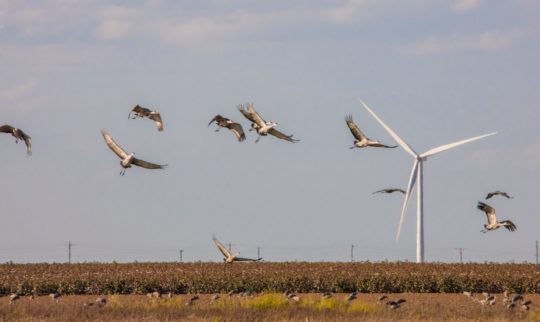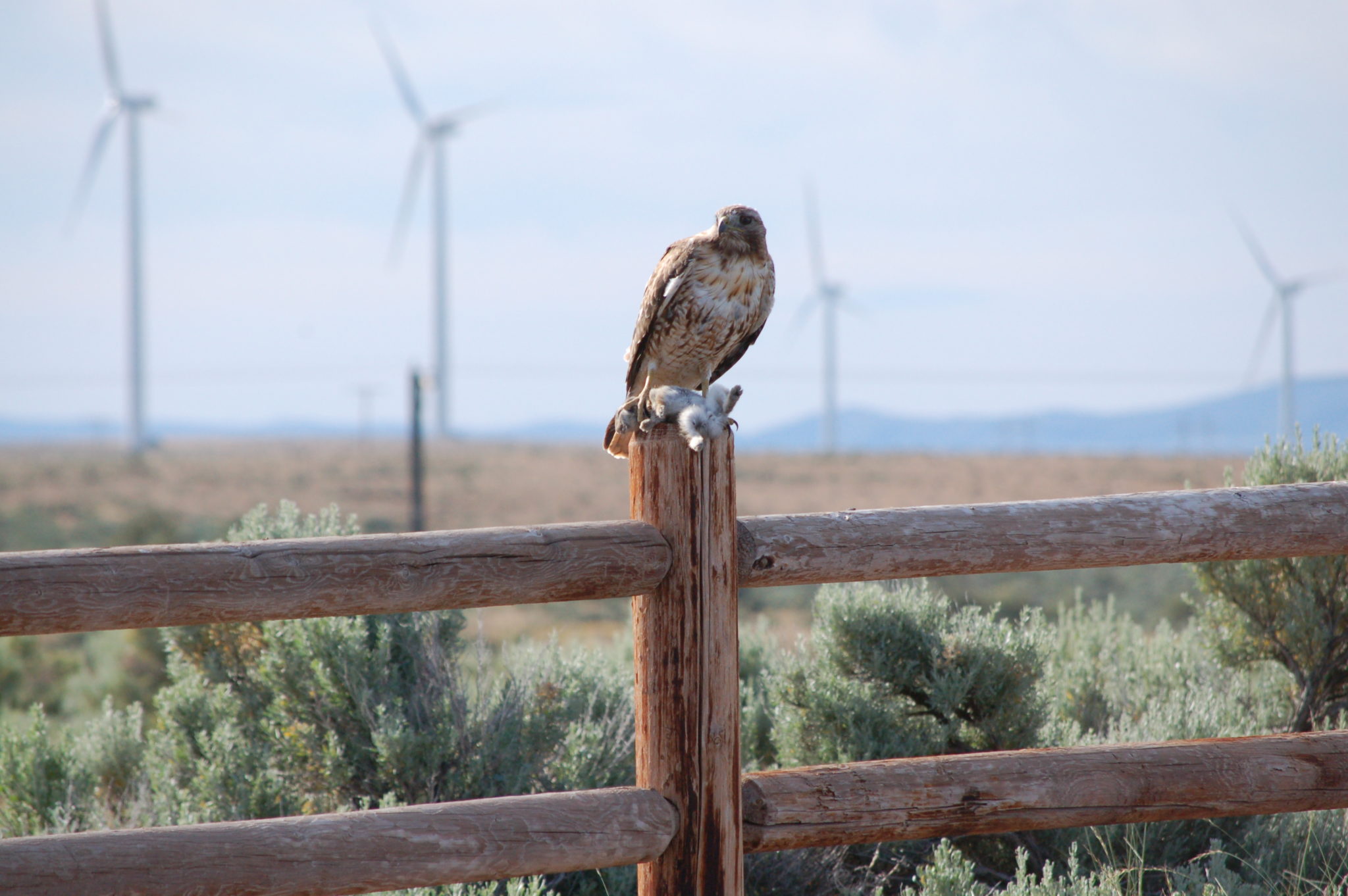Understanding Risks and Developing Solutions for Wind Energy and Wildlife
Guest author Abby Arnold of the Renewable Energy Wildlife Institute explores the collaboration between the wind industry and the conservation community.
As executive director of the Renewable Energy Wildlife Institute (REWI) since 2010 and as REWI’s interim director during its founding, Abby works with wind energy industry and conservation and scientific partners to facilitate wind energy development while protecting wildlife.
Like all sources of energy, wind can have impacts on some species of wildlife. Although these impacts are low compared to other energy sources, work remains to understand the risks and develop more ways to ensure wind energy is as safe as possible for wildlife such as birds and bats while maximizing production of clean energy that benefits all wildlife by helping mitigate climate change.
To facilitate the advancement of wind energy while protecting wildlife and wildlife habitat, in 2008, the wind industry and the conservation community came together to create the Renewable Energy Wildlife Institute (REWI), where Apex sits on the Board of Directors. REWI is an independent, nonprofit 501(c)3 organization that advances scientific research and collaboration to better understand wind energy’s risks to wildlife and produce cost-effective, science-based solutions for reducing those risks. Built on a strong partnership of leaders, REWI works collaboratively with the wind industry, conservation and science organizations, and wildlife management agencies to produce robust science and coordinate efforts across the wind-wildlife community.
Assessing Risk
Reducing risks is only possible by first understanding those risks. For more than 20 years, wind companies have collected data on bird and bat fatalities at their facilities. Some of the data are publicly available, but other data remain confidential and are privately owned.
Working closely with the industry, REWI has developed the American Wind Wildlife Information Center (AWWIC). AWWIC expands the availability of wind-wildlife data for scientific analysis by working with industry collaborators to incorporate both publicly available and contributed data while maintaining confidentiality. It provides the first chance to analyze data from many sites and many species, and all at once.
The first published analyses of AWWIC data for birds and bats set the foundation for further studies of what bird species are at risk, and where and why they are at risk. These findings are already helping wind companies and other stakeholders understand the greatest risks, target investments in practical solutions, and cut costs.

(Kenton Rowe)
Developing Solutions
Technologies are emerging that make it possible to reduce collision risks for wildlife while minimizing curtailment and downtime for turbines. Developers combine biology, computing, and engineering to detect target species and deter them from approaching, curtail the turbines, or both when the system determines that target species are at risk of a collision.
Through its Technology Innovation program, REWI engages with researchers to conduct scientific evaluations of emerging and available detection, deterrent, and/or curtailment technologies at commercial wind energy facilities, raises project funding, and oversees the design and execution of the tests to ensure that results can be compared across multiple projects and are scientifically rigorous. Published results include pilot tests of the IdentiFlight and DTBird systems for minimizing impacts to eagles and other raptors. Further evaluations of these technologies are under way, as are evaluations of ultrasonic acoustic deterrents and smart curtailment systems for bats.
REWI also develops new compensatory mitigation options for when impacts are unavoidable. With two models published and another in development, companies will soon have additional ways to support overall eagle conservation when individual impacts can’t be avoided.
REWI collaborates with companies like Apex and other industry leaders and wind-wildlife practitioners from across stakeholder groups to ensure that results are shared and implemented.
Enabling Application
REWI collaborates with companies like Apex and other industry leaders and wind-wildlife practitioners from across stakeholder groups to ensure that results are shared and implemented.
REWI also synthesizes the latest knowledge on wind-wildlife interactions. It maintains a comprehensive searchable Wind Wildlife Documents Library and annually publishes a summary report on what is known and research gaps for wind energy and wildlife. In 2019, REWI’s director of research coauthored a publication of Issues in Ecology synthesizing current, accurate, and properly contextualized information about the benefits of wind energy, adverse wind-wildlife impacts, efforts to find solutions, and recommended focus for future research.
REWI also engages in robust outreach, sharing web-based resources such as a Results Catalog of its publications and a Wind-Wildlife FAQ, and offering webinars, workshops, and other engagement opportunities both through REWI and through the National Wind Coordinating Collaborative, which REWI facilitates.
Wind Wildlife Research Fund
In 2019, over 30 leading wind companies, including Apex, launched the Wind Wildlife Research Fund, a unique initiative that pools resources to advance collaborative, priority research to produce scientifically robust solutions that enable the continued expansion of wind energy while advancing wildlife conservation. REWI manages the Fund and lends its scientific expertise by identifying research priorities through the National Wind Wildlife Research Plan and facilitating independent peer or expert review of all Fund results. REWI represents a new model for approaching this cross-sector challenge.
The institute is applying new technological approaches to the problem to understand and reduce risk through sound science and collaboration. With this approach, wind operators can reduce costs while achieving greater wildlife conservation so that wind energy can fulfill on its environmental promise and continue to lead the clean energy transformation.

